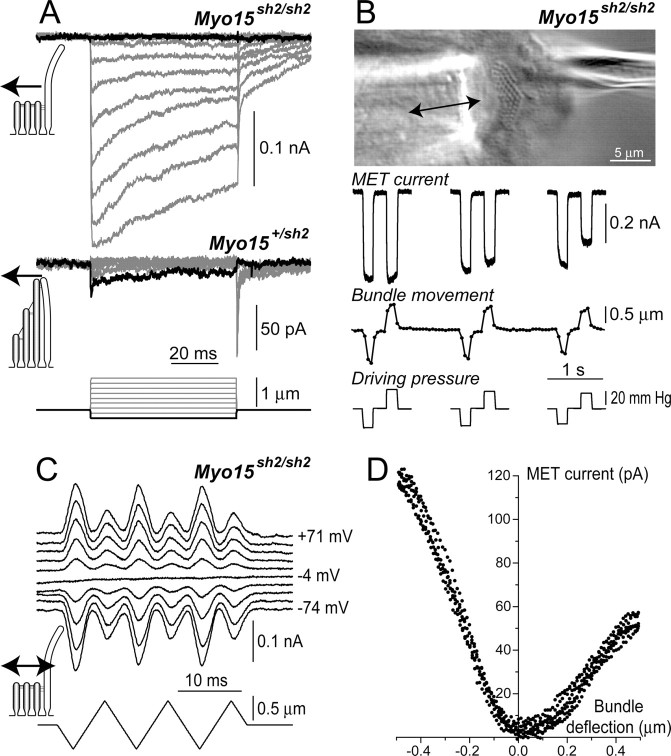Figure 9.
Abnormal directional sensitivity of Myo15 sh2/sh2 IHCs. A, MET currents evoked by negative displacements of stereocilia with a piezo-driven stiff probe in Myo15 sh2/sh2 (top) and Myo15 +/sh2 (middle) IHCs. Bottom traces show command voltage converted to displacement units. Holding potential: −90 mV. B, MET responses evoked by consecutive negative and positive deflections of the same bundle by a fluid-jet. Top image illustrates a fluid-jet pipette (left), a Myo15 sh2/sh2 IHC bundle (middle), and a patch pipette (right). Traces below show the records obtained in this experiment (from top to bottom): MET responses, movement of the stereocilia bundle determined by off-line frame-by-frame analysis of the video record (Frolenkov et al., 1997), and the command pressure that was applied to the fluid-jet pipette. C, In an experiment when the probe was strongly adhered to the hair bundle, both positive and negative ramp-like deflections of stereocilia evoked MET responses in a Myo15 sh2/sh2 IHC. Top traces show MET responses at different holding potentials (right), which are indicated after correction for the voltage drop across series resistance. Note that the MET responses reverse at the holding potential close to zero as expected for nonselective cation channels. Bottom trace shows the stimulus. D, Current-displacement relationship derived from MET responses at + 71 mV holding potential in (C). To illustrate sampling frequency, the data are presented as a scatter plot of individual measurements during ramp deflections of stereocilia. The ages of the cells: (A) P3 + 4 d in vitro and P3 + 3 d in vitro; (B) P3 + 4 d in vitro; (C, D) P4 + 4 d in vitro. Insets in A, D show schematically the direction of the stimuli.

